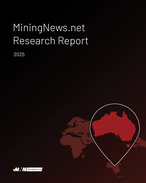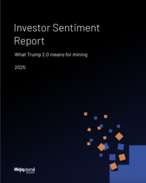This article is 2 years old. Images might not display.
The miner posted September quarter shipments of 47.5 million tonnes, 4% up year-on-year and a new September quarter record.
C1 costs rose 3% quarter-on-quarter and 16% year-on-year to US$17.69 per wet metric tonne.
The company said costs largely reflected the price escalation of key input costs, including diesel and labour rates but were partly offset by a weaker Australian dollar.
Average revenue per tonne dropped to $87 per dry metric tonne from $108/t in the June quarter and $100/t for the 2022 financial year.
However, price realisation improved to 85% of the Platts 62% index from 78% in the June quarter and 72% for FY22.
RBC Capital Markets had forecast pricing of $91/t.
"Sales and unit cost were marginally better than expected but offset by lower-than-expected Iron ore pricing," analyst Kaan Peker said.
FY23 guidance was maintained at 187-192Mt at C1 costs of $18-18.75/t.
FMG closed the September quarter with cash of $3.3 billion, down from $5.2 billion three months earlier following the payment of $2.4 billion in dividends and capital expenditure of $653 million.
Capex guidance for FY23 was maintained at $2.7-3.1 billion plus an additional $230 million for green arm Fortescue Future Industries and operating costs of $500-600 million.
Group gross debt was unchanged at $6.1 billion while net debt was $2.8 billion.
"The Fortescue team has delivered a strong start to FY23 with record first quarter shipments of 47.5 million tonnes," FMG executive chairman Dr Andrew Forrest AO said.
"Importantly, the team achieved our lowest total recordable injury frequency rate of 1.7, demonstrating our continued commitment to look out for our mates on our journey to zero harm."
FMG announced last month it would invest billions to achieve net zero Scope 1 and 2 emissions across its iron ore business by 2030, saving an estimated $3 billion over that time and realising annual savings of $818 million after 2030.
"Business as usual is over," Forrest said.
"There has been a historic underinvestment in clean energy globally. The maintenance and subsidy of fossil fuels has a detrimental climatic impact and prolongs their prolific use.
"We are making the choice to turn off fossil fuels to provide stronger outcomes for our shareholders and better outcomes for the planet. The acceleration of the energy transition for the resources industry requires subsidies for green energy globally.
"This will be a core message we will take to COP27 next month to help enable other companies to join us."
Forrest will hold a conference call for media and analysts later today.
Shares in the company were up 0.1% to A$16.15.























